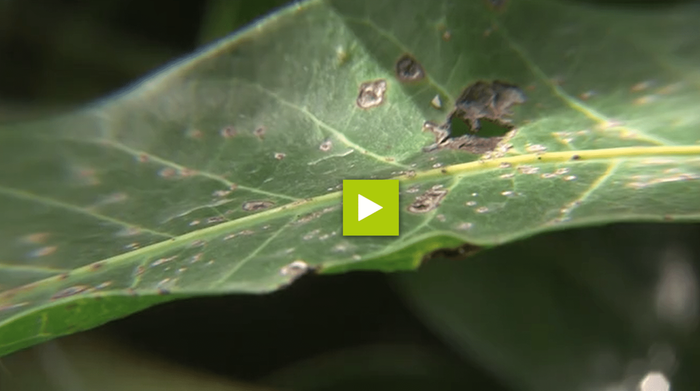Anthracnose is a serious fungal disease of mango that thrives well in wet and dump conditions. This can be managed manually by pruning and chemically using fungicides.
The disease causes serious damage in the field but it also destroys fruits after harvest hence being a major challenge to the export market.
Anthracnose manifests as black spots on the leaves which begin small but enlarge with time and create holes in the leaves and eventually the leaf dries off. The disease is spread by rain and infection begins from the leaves, spreads to the panicles, then to the flowers and eventually the whole plant.
Management practices
Scout your orchard regularly and monitor weather changes since anthracnose appears after rain.
Remove infected parts especially old small mummified mangoes. These act as a source of inoculum for the spread of the disease.
Prune the tree canopy to enable sun light penetration. This prevents having wet and humid conditions in the trees that favour anthracnose.
Fungicide use
Spray using fungicides. This only is not enough and works alongside manual control. The fungicides can be contact (copper based) or systemic. Use copper fungicides when first flashes appear and systemic fungicides shortly before flowering, but do not use fungicides at flowering since these will damage the flowers. Continue spraying every 3 to 4 weeks while alternating between systemic and contact fungicides.
Stop spraying 3 weeks before harvest while even within the contact and systemic fungicides, use those with different active ingredients.
Mix food colour with water and drench a tree from top to bottom and note how much volume used. Scale this up to the number of trees you have in order to estimate the amount of chemical needed.



















